Photo above: Prime Minister, Justin Trudeau (seated, fifth from left) and his newly-minted Cabinet, after their swearing-in ceremony. Photo credit: The PMO.
By Neil Armstrong
PRIDE Contributing Writer
TORONTO, Ontario — Many Canadians were glued to their televisions or computers to watch the swearing in of the country’s 23rd prime minister, Justin Trudeau, and his 30-member cabinet on November 4, but soon after, many Black Canadians took to social media to discuss the absence of a Black MP among the ethnically diverse new ministers named.
Some were critical of Trudeau’s statement to the media after the ceremony at Rideau Hall, residence of the governor-general in Ottawa that, “It’s important to be here before you today to present to Canada a cabinet that looks like Canada,” – given the absence of an African Canadian.
Ensuring that there is gender parity, the prime minister appointed 15 women and 15 men to the cabinet. Some are members of several ethnic groups; there are two persons with disabilities, an openly gay politician and two aboriginals.
Cultural critic, author and journalist, Dalton Higgins, who posted a critique on his Facebook page, said, he just happened to be in a space with many other Black Canadians watching the ceremony and they all had a similar reaction to the prime minister’s statement.
He said, they thought it was interesting that the prime minister made that kind of statement and there was a confused look on all of their faces.
“It’s actually incorrect. Maybe he needed another speechwriter — that’s not Canada,” said Higgins.
He thinks Trudeau was a little smug and inaccurate in how he articulated a new Canada.
“He could have said, something like, we’re making strides towards moving towards a cabinet that better represents Canada but we have a long way to go,” said Higgins.
He said, his Facebook post had little to do with the actual absence of a Black MP in the cabinet and more to do with the prime minister’s statement.
Higgins said, someone who is Asian (Chinese, Japanese, Korean) could have been equally offended because there are no Asians in the cabinet either.
“African Canadians represent, we’re a vibrant, thriving community and we represent significant numbers. I think that’s why I was a bit taken aback.”
Five of the eight Liberal candidates of Black, African or Caribbean descent who ran were elected in the recent elections, which saw the Liberals winning 184 electoral districts.
They are: Grenada-born Celina Caesar-Chavannes – Whitby, Ontario; Somalia-born Ahmed Hussen – York South-Weston, Ontario; Trinidad-born Dr. Hedy Fry – Vancouver Centre, British Columbia — a veteran MP elected for her eighth straight term as MP for Vancouver Centre; Haiti-born Emmanuel Dubourg – Bourassa, Quebec; and Greg Fergus – Hull-Aylmer, Quebec, who was born in Montreal.
Bernadette Clement of Stormont-Dundas-South Glengarry, Ontario, daughter of a Franco-Manitoban mother and Trinidadian-Canadian father; Kenya-born Beatrice Ghettuba of St. Albert, Edmonton and Peter Njenga of Abbotsford, B.C. also ran for the Liberals.
There were 30 candidates — 15 women and 15 men — in total that ran in the five federal political parties: Liberal, Conservative, NDP, Green, and Bloc Québécois.
Grace-Edward Galabuzi, Ryerson University associate professor in the department of politics and public administration, notes that there were five Black/Caribbean Canadians and about three East Asian Canadians who were elected but not represented in the cabinet, and yet there are four South Asians appointed.
“There’s an extent to which the Black community really needs to take more seriously the issue of electoral participation, because part of what is killing us is that although we are getting these incidental Black community members elected to parliament or the legislatures, they do not represent a strong political constituency that compels the leaders of these parties to put them in some positions.”
He said, a similar thing is happening with the provincial Liberal government, which has two Black members in cabinet, but the South Asians are doing much better there too.
Galabuzi said, South Asians are doing much better than African Canadians are, in terms of being in key positions.
He said, this is because all three political parties have figured out that the South Asian community – which in numbers is greater than the African Canadian community, but not by much in total — is engaged and involved, and they can make a difference in several constituencies or ridings.
“We have got to take the initiative and we’ve got to use the fact that we actually have significant numbers in some ridings as leverage, but that doesn’t work unless we organize.”
The professor also said, the Black community has “lost ground as the community that was sort of the default community whenever they were talking about minority issues.”
“Historically, when they were talking about minority issues, they were talking about people of colour, it was the issues that concerned us that were top of line. Increasingly, that is not the case and that is a big, big problem, and so we need to find a way to reassert ourselves back on the political agenda.”
The research associate at the Centre for Social Justice in Toronto said, members of the Black community need to be at the cabinet table to be effective.
“This is a big deal. It’s a big deal that we’re no longer the community of reference because a whole lot of the historical struggles around immigration, human rights, — those struggles were waged by our people and the coalitions that emerged involved our people. This generation really has to assume some responsibility around that kind of leadership.”
In the lead-up to the general election, the Coalition of Black Trade Unionists, Ontario Chapter (CBTU) was involved in a campaign, “Black Votes Matter,” to encourage African Canadians to participate in the electoral process.
“I think that more of our community went out to vote and voted in the traditional way. On Election Day, I was still hearing that Trudeau [Pierre] had done lots for us and therefore folks were going to support. I also think that when the results came in from the Atlantic, folks rushed to the polls,” said Marie Clarke- Walker, a member of the executive of the Coalition of Black Trade Unionists, Ontario Chapter (CBTU) who is attending meetings in Geneva, Switzerland.
“Lots of promises were made, so now we have to hold his feet to the fire but we are off to a half decent start — long form census, refugees, no Bill Blair in the cabinet and door to door mail delivery. The community now needs to keep in touch and make sure our needs are heard and met,” she said.
Trudeau, 43, is the second youngest prime minister in Canada’s history. Parliament will resume on December 3 and the Speech from the Throne will be presented on December 4.
 Pride News Canada's Leader In African Canadian & Caribbean News, Views & Lifestyle
Pride News Canada's Leader In African Canadian & Caribbean News, Views & Lifestyle

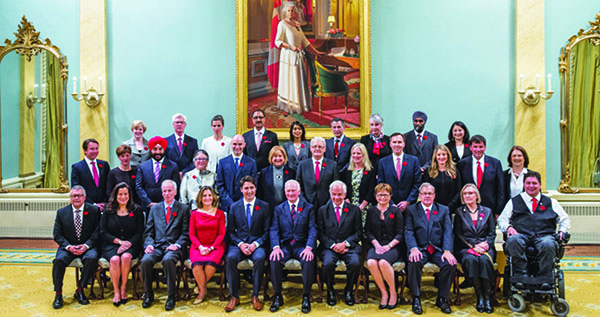
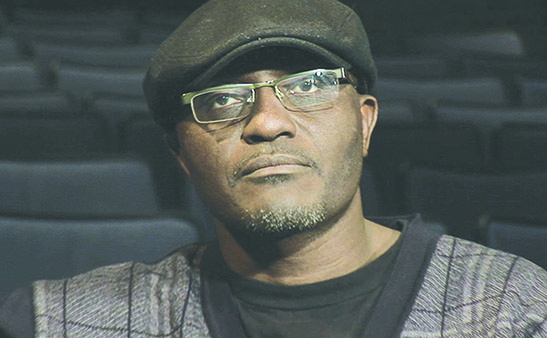

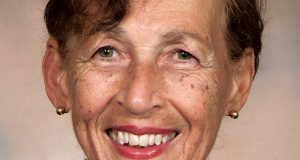
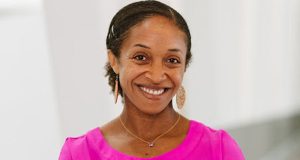
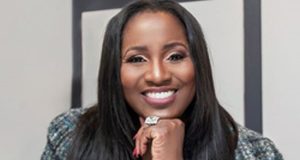
AGAIN TRUDEAU HAS NO AFRICAN CANADIAN IN CABINET
The late Pierre Elliot Trudeau was a popular Prime Minister of Canada until 1984. He outfoxed Joe Clark in the 1980 election, after a 8-month stay in Opposition. The son, the new Prime Minister, Justin Trudeau, said it is 2015. The year is important in his response to a reporter’s question, on why his cabinet was 15 women and 15 men. Out of 338 new Members of Parliament, elected in 2015, 88 were women. But women make up more than 50 percent of the population; it’s about time for half-half!
When support for the New Democratic Party collapsed during the 2015 election campaign, it dragged down the fortunes of its females, who accounted for an unprecedented 43 percent of the party’s candidates. The Liberals, by comparison, had 31 percent female candidates and, though replaced Prime Minister Stephen Harper’s Cabinet was diversified, Conservatives fielded even less than 20 percent women.
Nevertheless, Conservative Prime Minister, Steven Harper, appointed the first African-Canadian Governor General of Canada, Michaëlle Jean (2005–2010). He had a diversified cabinet that included women, Aboriginals, South Asians, East Asians, Quebecers and one disabled person.
Though Pierre Trudeau had no elected African/Caribbean Canadian, controversial Anne Cools was chosen in 1984 for the Senate. Other Senators of African descent were: Donald Oliver (appointed 1990), now retired; and Calvin Ruck, who died in 2004 (appointed in 1998).
Politically and ethnically, Canada had tried to diversify because of the English and French bi-cultural promotion at the Federal level. In 1993, Kim Campbell, from Port Alberni, British Columbia, became the first and only female Prime Minister. Now in the US House of Representatives, women make up 15.7% of seats; they make up 26% of the Canadian House of Commons; compared to the British House of Commons, where women are 191 out of 650 MPs, with 29.4% representation.
Canadian Aboriginals are breaking records with each successive election, going from five to seven MPs in 2011 to a total of ten in 2015. Justin’s father, Pierre Trudeau, included in his cabinet an Aboriginal, Leonard Marchand, who served as environment minister in the 1970s. Mr. Pierre Trudeau himself, a French Canadian from Montreal, was recruited by Prime Minister Lester Pearson, during the Quebec revolt as it threatened to break away from the rest of English Canada.
During Pierre’s time as Prime Minister in the seventies, Conservatives in Western Canada, especially from Alberta, felt alienated from the Liberal Party, dominated by the East. Through the world oil crisis and after the Arab embargo, Canadians had oil, but mostly from Alberta. It created some bad blood between Pierre Trudeau, who taxed Alberta oil to subsidize all Canadians, and (Sheik!) Peter Lougheed, the Alberta Premier, who could not sell the province’s oil, at the world price, to the rest of Canada.
Pierre Trudeau created political diversity between the Easterners, who labeled Albertans “Blue Eye Sheiks”, and Westerner Albertans that could care less if “the Eastern bastards freeze in the dark”. Pierre Trudeau diversified later, by seeking Jack Horner, a right wing Conservative from Alberta, into his cabinet. Jack Horner crossed the floor and was appointed minister.
Apart from women, 4 members of Indian Sikhs were also celebrated in 2015. Justin Trudeau’s cabinet now has more Sikh cabinet ministers; more than that of India, their country of origin. Better than speculation of one after the election of a Sikh as minister. The rest of the Indians cannot complain but other South East Asians from Pakistan, Bangladesh, Nepal and Sri Lanka must be wondering. What is surprising is the absence of East Asians from China, the Philippines, Vietnam, Japan, Korea e.tc. One Sikh, one Chinese and one African/Caribbean could have settled that.
According to Statistics Canada, one out of every five Canadians was a visible minority in 2011. The top citizen groups are of Asian, South Asian and Afro-Caribbean descent. Prime Minister Justin Trudeau’s “cabinet that looks like Canada” should have included members of visible minorities, that is, people other than the Aboriginals, who are non-Caucasian in race or non-white in color as defined by Canada Equity Act.
According to Statistics Canada, the Canadian population, in 2011, of visible minorities:, African/Caribbean made up of 15%, Middle East 12%, South Asians 25%, Asians 40% — but South Asians make up 80 percent of the minorities in Justin Trudeau’s 2015 cabinet, while Middle Easterners make up the other 20%.
The first African-Canadian woman in Cabinet: Zanana Akande, St-Andrew’s-St. Patrick’s, Ontario New Democratic Party MPP 1990–1994; First African-Canadian elected to House of Commons: Rt. Hon Lincoln Alexander – Hamilton West, Progressive Conservative MP 1968–1984.
Lincoln Alexander from Hamilton Ontario was the first African/Caribbean cabinet minister in the Conservative Party of Brian Mulroney in 1979. Jean Chrétien appointed Indian Sukh Dhaliwal, as well as the first Chinese minister, Hong Kong-born Raymond Chan, to his cabinets.
The new world Diversity must include African descendants in Europe and Americas. Prime Minister Justin Trudeau, in 2015, did not include the children of African/Caribbean that were born around his time or that he went to school with. They can feel his love right now.
However, African/Caribbean Canadians have not had a cabinet minister since Jean Augustine retired in 2004 in Liberal Party of Paul Martin and Hedy Fry 1996-2002 in Jean Chretien’s cabinet.
Farouk Martins Aresa